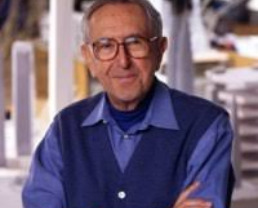The Petronas Towers
The Petronas Towers, also known as the Petronas Twin Towers, are twin skyscrapers in Kuala Lampur, Malaysia. According to the Council on Tall Buildings and Urban Habitat (CTBUH)'s official definition and ranking, they were the tallest buildings in the world from 1998 to 2004, until they were surpassed by Taipei 101. The Petronas Towers remain the tallest twin towers in the world. The buildings are a landmark of Kuala Lumpur, along with nearby Kuala Lumpur Tower; they remain the tallest buildings in Kuala Lumpur.

History and architecture
A Petronas Towers' structural system is a tube in tube design, invented by Fazlur Rahman Khan. Applying a tube-structure for extreme tall buildings is a common phenomenon.
The 88-floor towers are constructed largely of reinforced concrete, with a steel and glass facade designed to resemble motifs found in Islamic art, a reflection of Malaysia's Muslim religion. Another Islamic influence on the design is that the cross section of the towers is based on a Rub el Hizb, albeit with circular sectors added to meet office space requirements. The circular sectors is similar to the bottom part of the
Development of the Petronas Towers Tower 1 level 43 floor plan from a Rub el Hizb symbol.The cross section of the Petronas Towers based on a Rub el Hizb, albeit with circular sectors is similar to the bottom part of the Qutub Minar.
The towers were designed by Argentine architect César Pelli. A distinctive postmodern style was chosen to create a 21st-century icon for Kuala Lumpur, Malaysia. Planning on the Petronas Towers started on 1 January 1992 and included rigorous tests and simulations of wind and structural loads on the design. Seven years of construction followed at the former site of the original Selangor Turf Club, beginning on 1 March 1993 with excavation, which involved moving 500 truckloads of earth every night to dig down 30 meters (98 ft) below the surface.
The construction of the superstructure commenced on 1 April 1994. Interiors with furniture were completed on 1 January 1996, the spires of Tower 1 and Tower 2 were completed on 1 March 1996, 3 years after its construction was started, and the first batch of Petronas personnel moved into the building on 1 January 1997. The building was officially opened by the Prime Minister of Malaysia on 1 August 1999. The twin towers were built on the site of Kuala Lumpur's race track. Test boreholes found that the original construction site effectively sat on the edge of a cliff. One half of the site was decayed limestone while the other half was soft rock. The entire site was moved 61 meters (200 ft) to allow the buildings to sit entirely on the soft rock. Because of the depth of the bedrock, the buildings were built on the world's deepest foundations. 104 concrete piles, ranging from 60 to 114 metres (197 to 374 ft) deep, were bored into the ground. The concrete raft foundation, comprising 13,200 cubic metres (470,000 cu ft) of concrete was continuously poured through a period of 54 hours for each tower. The raft is 4.6 metres (15 ft) thick, weighs 32,500 tonnes (35,800 tons) and held the world record for the largest concrete pour until 2007. The foundations were completed within 12 months by Bachy Soletanche and required massive amounts of concrete.
As a result of the Malaysian government specifying that the buildings be completed in six years, two construction consortia were hired to meet the deadline, one for each tower. Tower 1, the west tower (left in the top-right photograph) was built by a Japanese consortium led by the Hazama Corporation (JA Jones Construction Co., MMC Engineering Services Sdn Bhd, Ho Hup Construction Co. Bhd and Mitsubishi Corp) while Tower 2, the east tower (right in the top-right photograph) was built by a South Korean consortium led by the Samsung C&T Corporation (Kukdong Engineering & Construction and Syarikat Jasatera Sdn Bhd).

About the Architect
César Pelli (October 12, 1926 – July 19, 2019) was an Argentine architect who designed some of the world's tallest buildings and other major urban landmarks. Two of his most notable buildings are the Petronas Towers in Kuala Lumpur and the World Financial Center in New York City. The American Institute of Architects named him one of the ten most influential living American architects in 1991 and awarded him the AIA Gold Medal in 1995. In 2008, the Council on Tall Buildings and Urban Habitat presented him with The Lynn S. Beedle Lifetime Achievement Award.
Pelli was born October 12, 1926, in San Miguel de Tucumán, Argentina. Pelli studied architecture at the Universidad Nacional de Tucumán. He graduated in 1949, after which he designed low-cost housing projects. In 1952, he attended the University of Illinois School of Architecture in the United States for advanced study in architecture, and received his Master of Science in Architecture degree in 1954.
